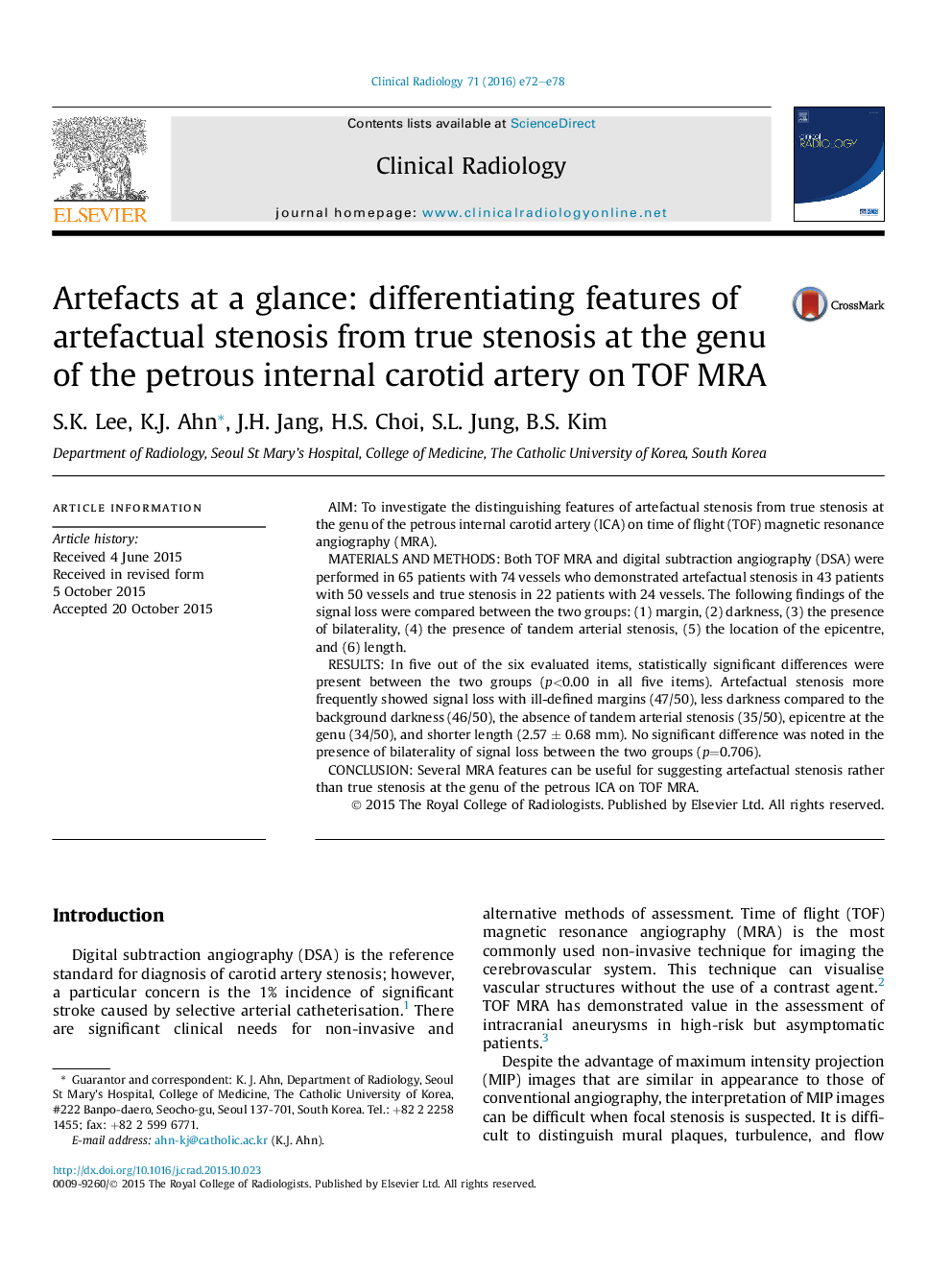| Article ID | Journal | Published Year | Pages | File Type |
|---|---|---|---|---|
| 3981451 | Clinical Radiology | 2016 | 7 Pages |
•TOF MRA is increasingly used for the noninvasive evaluation for imaging the cerebrovascular system.•We investigated several artifacts at the genu of petrous ICA on TOF MRA to prevent misinterpretations as true stenosis.•Short segmental, ill-defined, less dark defect at the epicenter of genu without tandem stenosis is more likely an artifact.
AimTo investigate the distinguishing features of artefactual stenosis from true stenosis at the genu of the petrous internal carotid artery (ICA) on time of flight (TOF) magnetic resonance angiography (MRA).Materials and methodsBoth TOF MRA and digital subtraction angiography (DSA) were performed in 65 patients with 74 vessels who demonstrated artefactual stenosis in 43 patients with 50 vessels and true stenosis in 22 patients with 24 vessels. The following findings of the signal loss were compared between the two groups: (1) margin, (2) darkness, (3) the presence of bilaterality, (4) the presence of tandem arterial stenosis, (5) the location of the epicentre, and (6) length.ResultsIn five out of the six evaluated items, statistically significant differences were present between the two groups (p<0.00 in all five items). Artefactual stenosis more frequently showed signal loss with ill-defined margins (47/50), less darkness compared to the background darkness (46/50), the absence of tandem arterial stenosis (35/50), epicentre at the genu (34/50), and shorter length (2.57 ± 0.68 mm). No significant difference was noted in the presence of bilaterality of signal loss between the two groups (p=0.706).ConclusionSeveral MRA features can be useful for suggesting artefactual stenosis rather than true stenosis at the genu of the petrous ICA on TOF MRA.
